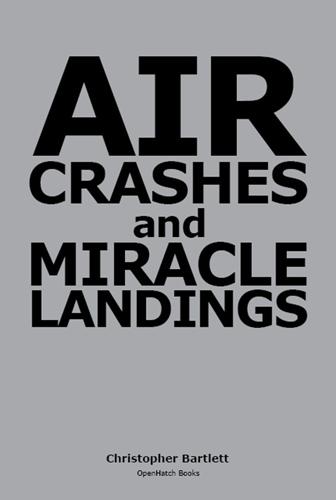
Air Crashes and Miracle Landings: 60 Narratives
by
Christopher Bartlett
Published 11 Apr 2010
As said at the beginning of this narrative, it would be difficult to find a nicer or indeed kinder one. CHAPTER 2 LOSS OF POWER OVER LAND CONSCIENTIOUS CREW FORGET FUEL REMAINING (Portland 1978) Classic Case Heralded CRM (Crew Resource Management) An absurd United Airlines DC-8 accident prompted the introduction of CRM, which initially stood for Cockpit Resource Management, but now allegedly stands for Crew Resource Management to reflect the role of crew working in other parts of the aircraft. [United Airlines Flight 173] On December 28, 1978, a United Airlines McDonnell Douglas DC-8 with flight number 173 was approaching Portland Airport in Oregon, USA.
…
Much of what the captain did and thought about was very commendable, but one has to wonder whether the drip-drip effect of spending so much time thinking about what might happen in the unlikely worst possible scenario did not affect the crewmembers’ grasp of the overall situation. Cockpit Resource Management (CRM) The incident revealed the need for formal policies and programs to ensure aircrew function well as a team, with each having defined complementary duties rather than everyone focusing on a single matter. United Airlines took the experience to heart and became the first to initiate such a program, using some of the techniques already used by business and management consultants. As mentioned at the beginning of this chapter, they called this Cockpit Resource Management (CRM), now changed to Crew Resource Management, to reflect the important role of others, such as cabin crew and even ground staff such as maintenance staff.
…
The official report into the accident mentions that the crop of high corn where the main part of the fuselage ended up upside down hampered rescue efforts by firefighters, and recommended that having agricultural crops in proximity to runways should be reconsidered. Thinking of how the rain sodden ground helped slow Qantas 1 on its 100 mph overrun at Bangkok, one cannot help wondering whether the high corn helped slow the aircraft. Looking at the feat from a piloting perspective, the main lesson does seem to be the importance of Cockpit Resource Management (CRM), though according to Captain Haynes, it was first called Cockpit Leadership Management. Each person performed his allotted task, and ‘ideas were thrown around.’ With hindsight, one idea, which could/should have come to mind, was that the pilots could have transferred fuel from the tanks in the right wing to those on the other side to correct the tendency to bank to the right.
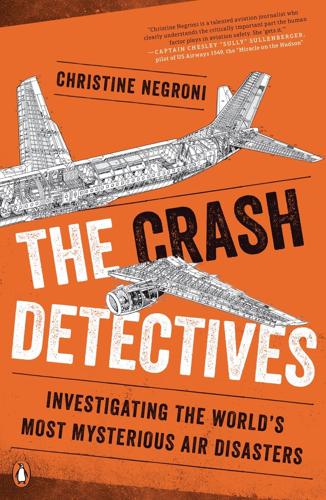
The Crash Detectives: Investigating the World's Most Mysterious Air Disasters
by
Christine Negroni
Published 26 Sep 2016
When John Lauber came across the detailed report he called it a “prototype” of an accident in which the crew does not manage the resources available. His cockpit resource management would teach pilots how to do this, in the same way businesses train their managers. “Pilots generally were well trained on aircraft systems and basic flying skills,” he said. But nothing was done to teach them what they needed to know for decision making, communication, and leadership. The Tenerife accident gave Lauber’s work new energy, and in the years to come, cockpit resource management would be changed to “crew resource management,” in recognition that other flight personnel such as mechanics, flight attendants, dispatchers, and air traffic controllers had a role to play in safe flights.
…
If the captain was considered God and everyone else a congregant, you can see how pilots would not/could not speak up even when they saw that something was wrong. John Lauber, working at NASA’s Ames Research Center in California at the time, had already spent several years noting the growing disparity between the reliability of the machine and that of the human flying it. He had visited airlines and spoken about a new concept he called cockpit resource management, or CRM. One of the airlines he visited was KLM Royal Dutch. One of the pilots he met was Captain van Zanten. Lauber remembered, “He was a very impressive guy, a blond, steely-eyed airline pilot. He was a strong-minded personality.” Lauber was pitching CRM as something airlines could use to train pilots to better manage their workplace.
…
Ministry of Transportation, 153 Air Botswana, 201 Airbus A35, 185–86 Airbus A300, 8, 47 Airbus A320, 222, 236, 247 Airbus A321, 99, 130 Airbus A330, 55 Airbus A380, 136, 190, 211, 239–40, 243, 246–47, 253–55 Air Canada Flight 143, 223–26, 234–35, 240–43, 249–50, 255–56 Aircraft Communications Addressing and Reporting System (ACARS), 20, 41, 45–46, 55, 57 air data inertial reference unit (ADIRU), 235–36 Air France Flight 447, 53, 55–58 Air Line Pilots Association (ALPA), 110, 171, 176, 216 Air New Zealand Flight 901, x, 117–31 Antarctic Experience flights, 118, 125, 128–29 Air Registration Board, United Kingdom, 150, 154 air traffic control (ATC) and accident investigation process, 82 and Air New Zealand Flight 901 crash, 120, 127 and Albertina crash, 89 and ANA Flight 692, 168 and Arrow Air crash, 108 and cockpit resource management, 220 and Comet crashes, 155 communications with hypoxic crew, 11, 13, 32–33 and complexity of air safety system, 260 and flight simulations, 252 and Helios Flight 522, 41 and human factors, 198–99, 201 and MH-370, 20–22, 62 and Northwest Flight 188, 227 and Qantas engine loss incident, 247 and radio navigation, 51 and Tenerife runway collision, 214–16 and United Flight 553, 84–85 Airline Training Center Arizona (ATCA), 198 Aizawa, Takeo, 193 Albertina (DC-6), 87, 89, 92–96 All Nippon Airways (ANA), 166–69, 181–82, 187, 192 Allen, A.
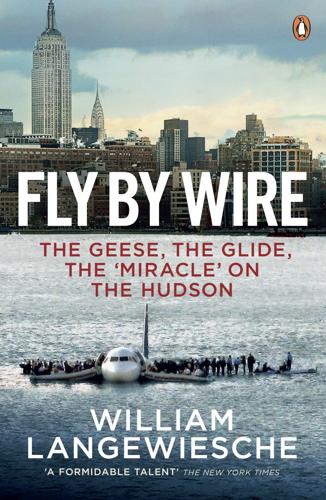
Fly by Wire: The Geese, the Glide, the Miracle on the Hudson
by
William Langewiesche
Published 10 Nov 2009
When asked about teamwork in the cockpit during the glide, he said there was little need for it, and little was involved: he had started into the checklist to restart the engines, and Sullenberger had done the flying. The division was plain and simple, and pretty obvious at the moment. You could arrive afterward and call it an exercise in Crew Resource Management—sorry, I mean CRM—if you insisted on fixing things up with formal language. CRM is indeed a useful term. Until recently it stood for Cockpit Resource Management and pertained only to pilots, until someone realized that the C could stand for Crew, allowing flight attendants into the program. Entire industries are built on this sort of progress. But frankly the glide had been very short, with no space for elaboration.
…
Sullenberger said, “Thank you.” The engine manufacturer had no questions. US Airways had no questions. The pilots’ union representative wanted to get back to crew resource management. There wasn’t much to say. In fact, if you wanted to pick one accident in which elaborations on teamwork don’t need to be made, this would be a good one to choose. It was I’ll fly the airplane, you try to restart the engines. But crew resource management has become a central dogma, the sine qua non of airline flying, and because Sullenberger’s landing had been successful, it seemed necessary to mix it in now. Sullenberger was willing to try.
…
The captain was fifty-seven years old, nearing the end of a long and successful career. He had an excellent reputation. The copilot was thirty-nine. His reputation was equally strong. In the Air Force he had once been named Instructor of the Year. Both pilots lived in Florida. They were good family men. They were athletic. They had been schooled repeatedly in Cockpit Resource Management. If asked, they would have sworn to the need for standardization, for regulation, and for what passes as professionalism in the trade. • It was a black night, though some lights may have been in sight. The weather at the airport was mostly clear, with a few clouds scattered about. Cali lies in a long, narrow valley oriented north–south, about 3,200 feet above sea level, and with mountains rising to 14,000 feet on each side.

Through the Glass Ceiling to the Stars: The Story of the First American Woman to Command a Space Mission
by
Eileen M. Collins
and
Jonathan H. Ward
Published 13 Sep 2021
The aircraft commander had to be comfortable with many leadership styles and know which ones were appropriate for a time-critical situation, using only his or her experience and judgment. I quickly learned to trust my enlisted crew, as many of them had been doing their jobs for more than a decade. They in turn respected aircraft commanders who listened to them. One of my most valuable leadership lessons was “cockpit resource management” or “crew resource management” (CRM). Developed by NASA and the National Transportation Safety Board in the late 1970s, CRM provides a structured way for flight crews to work through problem situations through better leadership, communication, and decision making. The basic tenets are: know your job and do your job; be aware of what the other crew members are doing; and communicate clearly and check for understanding.
…
See daycare center; nanny Chinn, Glenn, 79, 81 Chlapowski, Sue, 38 Clark, Laurel, 244, 254 Clark AFB, 76 claustrophobia, 55–56, 120 Cleave, Mary, 125, 128 Clervoy, Jean-François (Billy Bob), 181–183, 200, 203 Clinton, Hillary, 206–207, 218 Clinton, Bill, 167, 206–208 closeout crews, 141–144, 157, 161, 189, 221, 268 clutter, importance of managing in space 168 Coats, Mike, 125, 128 Cochran, Jackie, 13, 22, 285 cockpit resource management (or crew resource management, CRM), 84–85 Cocoa Beach, 203, 267 Coke Experiment, 169–171 Cold War, 12 Coleman, Cady, 113, 208, 210, 218–220, 227, 231, 236 community college, 21–22 Collins, Edward (Eddie, brother), 7, 14, 16–17 Collins, James Edward (father), 7–12, 19, 23, 158, 177, 244, 280 Collins, James (Jim/Jay brother), 7, 14, 18, 129, 280 Collins, Margaret (Margy, sister), 7, 16, 18, 129 Collins, Marie Reidy (grandmother), 167 Collins, Michael, 218, 285 Collins’ Restaurant and Pub (the Place), 9 Colorado Springs, Colorado, 88 Colosseum, 111–112 Columbia flow liner cracks, 241 fuel leaks, 132 landing, 242 maintenance, 214 modifications to carry Chandra, 210 STS-32R landing, 116 STS-50, 141–142 STS-55, 143–144 tribute to, 274 wreckage, 248 See also STS-93, STS-107 Columbia Accident Investigation Board, 249 Columbus, Ohio, 25 combat, 79–80 exclusion policy, 73–74, 81, 87, 113, 158 pay, 81 Comet Hale-Bopp, 197 communications skills, 59, 84, 90, 96, 239, 250–251 competition, 70, 103, 117, 250 complacency, 68 Compton Gamma Ray Observatory, 205 computerization of spacecraft, 145 Congress, 177 Conrad, Pete, 135 control and performance concept, 46, 59, 153 risk, 244 self, 9, 19, 26, 45, 110, 180, 229, 237 vehicle, 1, 5, 41, 61, 67, 105, 107, 151, 174, 194, 213, 232, 261 Cooney, Wilson, 47 Cooper-Harper scale, 104–105 copilot training course, 75 Coral Run, 76 Cornell University, 23 Corning Community College, 21 cosmonauts, 149, 154–155, 166–167, 182, 185, 194–195, 274 “The Cosmonaut’s Song,” 187 Country Cork, Ireland, 8 Courvoisier Cognac, 192 Covey, Dick, 110–111, 125–126 CRATER, 253 creativity, 182, 254–255 Crew Equipment Interface Test (CEIT), 140, 156 crew notebook, 196 Crew Transport Vehicle, 175, 203, 277 Crossfield, Scott, 92, 103 culture change, 77–78, 249–255 curiosity, 13, 40, 128, 285 Currie, Nancy, 132 Cyprus, 77 danger, 188, 212, 221, 223–227 on space shuttle, 201 data collecting, 106, 123, 152, 183, 203, 279 supporting launch decision, 268 transforming into information, 104 unreliable, 166, 194, 220 dating, 39, 85–86 Davis, AJ, 29–30 Davis, Ernie, 7, 285 Davis, Jan, 142 daycare center, 187 Dayton, Ohio, 112 decision-making, 40, 109, 135 dehydration, 53, 163, 279 delays, 150–151 Delta Air Lines, 92, 240, 279 departure from controlled flight, 107–109 depressurization, 39 desk job, 85, 238 Diego Garcia, 76 differential calculus, 89 digital control unit (DCU), 224–225 disappointment, 16, 147–148, 151, 231 discipline, 11, 43–44, 50, 65, 90, 108, 181, 187, 255, 285 Discovery flow liner cracks, 241 rudder/speed break actuators (RSBs), 261 STS-41D pad fire, 143–144 wiring repairs, 234 See also STS-63, STS-114 discrimination, 179 Dittemore, Ron, 239 dive flight, 109 dogfighting, 64 Donaldson, Sam, 207 Double Diego mission, 76, 86 Dover Air Force Base, 30, 79 dream, 92, 106, 118, 127, 129, 132, 196, 206–208, 274, 286 achieving, 1, 95, 127, 129, 153, 158, 206, 281–282 importance of, 208 See also goals dream sheet, 73–74 Eadie, Bob, 70 Earhart, Amelia, 13 Earth curvature, 6 observation, 137, 281 reflection, 198–199 return to reaction, 175–176 from space, 198 Edison, Thomas, 285 Edwards AFB, 95–96, 98–99, 275, 277 parachute room, 116 Eglin AFB, 113 ego.
…
As commander, I spent many hours negotiating how Michel could access the information he needed to fulfill his role on the mission. But, despite my efforts, we ended up being the only space shuttle crew to fly an IUS without training at the Boeing plant. New Commander, New Pilot My pilot, Jeff Ashby, and I were both new in our respective roles. He and I practiced together closely to perfect our cockpit resource management techniques as well as all of the technical challenges of flying the space shuttle and operating its systems. The Mission Specialist 2 on the shuttle’s crew serves as the flight engineer and has important roles during ascent and entry. Steve flew as MS 2 on all four of his previous missions.
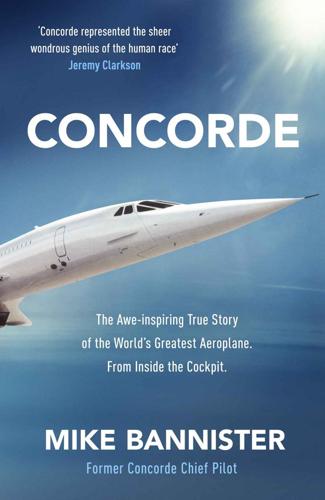
Concorde: The Thrilling Account of History’s Most Extraordinary Airliner
by
Mike Bannister
Published 29 Sep 2022
A fireman – the first person to enter the shattered flight deck – had found his body slumped over the centre console and his earphones in the right-hand footwell, indicative of the fact he’d been attempting to intervene during Papa India’s fall from the sky. We will, however, never know. The fact that it led to what was known as ‘cockpit resource management’, later called ‘crew resource management’, was one of the crucial outcomes of the crash. CRM is a structured decision-making process in which everyone on the flight deck understands what they and everyone else is supposed to be doing through SOPs: standard operating procedures. Papa India’s legacy was active measures to get around the ‘seniority gradient’.
…
As a result, two memorable measures were introduced, one technical, the other procedural, that were supposed to eliminate the possibility of this kind of thing happening again. The legacy technical measure was the introduction of the cockpit voice recorder, which would henceforth give investigators a clear understanding of flight deck interactions in the wake of an accident. The second had been the introduction of ‘cockpit resource management’ – later called ‘crew resource management’. CRM was the training that all commercial pilots received to allow them to overcome the perceived problem in Papa India – something known as the ‘seniority gradient’. Rooted in CRM was the idea that anyone could challenge anyone else’s decision on the flight deck, as long as it was done in the right way; and the training was designed to ensure that it was.
…
The Co-Pilot and the Captain are equally qualified and will usually alternate sectors as Handling Pilot and Non-Handling Pilot. CPL A Commercial Pilot Licence is the minimum qualification for a pilot to be permitted to operate a large passenger aircraft, and to be remunerated for doing so. CRM Crew Resource Management is the structured procedure taught to, and used by, flight and cabin crews for improving aviation safety with a focus on interpersonal communication, leadership, and decision making in aircraft cockpits. Developed initially by David Beaty, a former BOAC pilot, it came under focus as a valuable tool following the 18th June 1972 Papa India accident at Staines, UK.

Emotional design: why we love (or hate) everyday things
by
Donald A. Norman
Published 10 May 2005
The commercial aviation community has done an excellent job of fighting this tendency with its program of "Crew Resource Management." All modern commercial aircraft have two pilots. One, the more senior, is the captain, who sits in the left-hand seat, while the other is the first-officer, who sits in the right-hand seat. Both are qualified pilots, however, and it is common for them to take turns piloting the aircraft. As a result, they are referred to by the terms "pilot flying" and "pilot not flying." A major component of crew resource management is that the pilot who is not flying be an active critic, continually checking and questioning the actions taken by the pilot who is flying.
…
Afire upon the deep. New York: Tor. Weizenbaum, J. (1976). Computer power and human reason: Fromjudgment to calculation. San Francisco: W. H. Freeman. Whyte, W. H. (1988). City: Rediscovering the center (1st ed.). New York: Doubleday. Wiener, E. L., Kanki, B. G., & Helmreich, R. L. (1993). Cockpit resource management. San Diego: Academic Press. Wolf, M. J. P. (2001). The medium of the video game (1st ed.). Austin: University of Texas Press. See "Genre and the Video Game" at http://www.robinlionheart. com/gamedev/genres.xhtml. TLFeBOOK Index Accidents, 28, 78, 203, 204, 205, 229 Advertising, 41, 42, 43, 45, 54, 78, 79, 87, 91, 92, 104, 105, 152 Aesthetics, 4, 8, 18, 19, 87, 102, 103, 104, 105, 120,225 as culturally dependent, 18 and usability, 19 See also Beauty Aesthetics of the Japanese Lunchbox, The (Ekuan), 101, 102(fig.), 103 Affect, 11, 12, 13, 18, 20, 24, 25, 26, 27, 28, 29, 32, 36, 37, 38, 95, 103, 119, 124, 125, 126, 135, 138, 140, 154, 166, 167, 169, 176,179,182,184,185,203,211 behavioral level of, 124, 125 negative, 20, 22, 24, 25, 26, 27, 28, 29, 32, 36,95,119,138,154,179.
…
Email received in response to my query on the CHI discussion group. May 2002. (CHI is the Computer-Human Interaction society.) 143 "It's human nature to trust our fellow man" (Mitnick & Simon, 2002, p. 32.) 144 "social psychologists Bibb Latane and John Darley" and "Bystander apathy" (Latane & Darley, 1970) 145 "Crew Resource Management" (Wiener, Kanki, & Helmreich, 1993) 146 "As I was writing this book" (Hennessy, Patterson, Lin, & National Research Council Committee on the Role of Information Technology in Responding to Terrorism, 2003) 148 "Everywhere is nowhere." Thanks to John King, Dean of the School of Information at University of Michigan for the quotation from Seneca. 150 "Instant messenger."
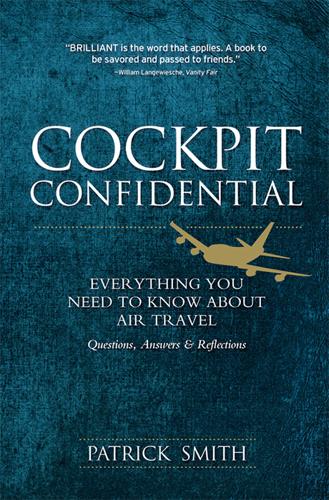
Cockpit Confidential: Everything You Need to Know About Air Travel: Questions, Answers, and Reflections
by
Patrick Smith
Published 6 May 2013
Requirements for an ATP include a minimum of 1,500 hours of flight time (broken down over various categories) and satisfactory completion of written and in-flight examinations. Additionally the law will redefine the ATP certificate itself, emphasizing the operational environments of commercial air carriers and requiring specialized training in things like cockpit resource management (CRM), crew coordination, and so on. These changes will make it easier to weed out pilots who lack the acumen for airline operations. For those who progress, it will allow an easier transition from general aviation into the high-demand training environment at a regional. It will lower their training costs and, ultimately, make for safer cockpits.
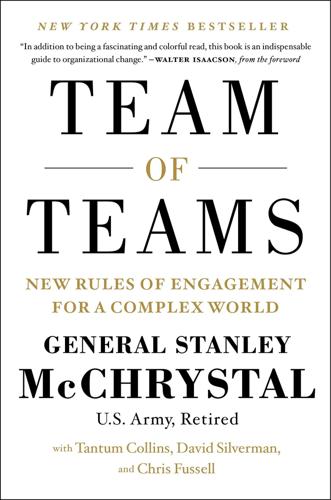
Team of Teams: New Rules of Engagement for a Complex World
by
General Stanley McChrystal
,
Tantum Collins
,
David Silverman
and
Chris Fussell
Published 11 May 2015
Helmreich, “On Error Management: Lessons from Aviation,” British Medical Journal, 320, no. 7237 (2000): 782. CRM-trained . . . http://www.apa.org/research/action/crew.aspx. juniors to speak more assertively . . . Helmreich et al., “Evolution of Crew Resource Management Training,” 20. “charm school” . . . Helmreich et al., “Evolution of Crew Resource Management Training,” 21. In 1989, another United . . . National Transportation Safety Board, Aircraft Accident Report: United Airlines Flight 232 McDonnell Douglas DC-10-10 Sioux Gateway Airport; Sioux City, Iowa, July 17, 1989, NTSB Number AAR-90-06 (Washington, D.C., 1991), 75.
…
National Transportation Safety Board, Aircraft Accident Report: United Airlines Flight 232 McDonnell Douglas DC-10-10 Sioux Gateway Airport; Sioux City, Iowa, July 17, 1989, NTSB Number AAR-90-06 (Washington, D.C., 1991), 75. no safety procedure . . . http://clear-prop.org/aviation/haynes.html. In 1981, United.Robert L. Helmreich, Ashleigh C. Merritt, and John A. Wilhelm, “The Evolution of Crew Resource Management Training in Commercial Aviation,” International Journal of Aviation Psychology 9, no. 1 (1999): 20. 185 of the 296 people . . . American Psychological Association, Making Air Travel Safer Through Crew Resource Management, February 2014, http://www.apa.org/research/action/crew.aspx. thirty-one communications per minute . . . American Psychological Association, Making Air Travel Safer. “If we had not let” . . . http://clear-prop.org/aviation/haynes.html.
…
National Transportation Safety Board, AAR 1989, 76. more than 90 percent . . . Barbara G. Kanki, Robert L. Helmreich, and José M. Anca, “Why CRM? Empirical and Theoretical Bases of Human Factors Training,” in Crew Resource Management, 2nd ed. (Amsterdam: Academic Press/Elsevier, 2010), 35. See original study: R. L. Helmreich and J. A. Wilhelm, “Outcomes of Crew Resource Management Training,” International Journal of Aviation Psychology 1 (1991): 287–300. 2012 and 2013 had the fewest deaths and fatalities . . . 2012 had fewer crashes, but 2013 had the fewest casualties, with 265 fatalities (compared with the past ten-year average of 720 fatalities).
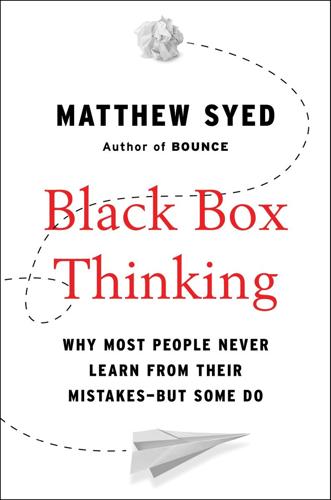
Black Box Thinking: Why Most People Never Learn From Their Mistakes--But Some Do
by
Matthew Syed
Published 3 Nov 2015
On the thirtieth page, in the dry language familiar in such reports, it offered the following recommendation: “Issue an operations bulletin to all air carrier operations inspectors directing them to urge their assigned operators to insure that their flight crews are indoctrinated in principles of flightdeck resource management, with particular emphasis on the merits of participative management for captains and assertiveness training for other cockpit crewmembers.” Within weeks, NASA had convened a conference to explore the benefit of a new kind of training: Crew Resource Management. The primary focus was on communication. First officers were taught assertiveness procedures. The mnemonic that has been used to improve the assertiveness of junior members of the crew in aviation is called P.A.C.E. (Probe, Alert, Challenge, Emergency).* Captains, who for years had been regarded as big chiefs, were taught to listen, acknowledge instructions, and clarify ambiguity.
…
To the public it was an episode of sublime individualism; one man’s skill and calmness under pressure saving more than a hundred lives. But aviation experts took a different view. They glimpsed a bigger picture. They cited not just Sullenberger’s individual brilliance but also the system in which he operates. Some made reference to Crew Resource Management. The division of responsibilities between Sullenberger and Skiles occurred seamlessly. Seconds after the bird strike, Sullenberger took control of the aircraft while Skiles checked the quick-reference handbook. Channels of communication were open until the very last seconds of the flight.
…
This was a fascinating discussion, which largely took place away from the watching public. But even this debate obscured the deepest truth of all. Checklists originally emerged from a series of crashes in the 1930s. Ergonomic cockpit design was born out of the disastrous series of accidents involving B-17s. Crew Resource Management emerged from the wreckage of United Airlines 173. This is the paradox of success: it is built upon failure. It is also instructive to examine the different public responses to McBroom and Sullenberger. McBroom, we should remember, was a brilliant pilot. His capacity to keep his nerve as the DC8 careered down, flying between trees, avoiding an apartment block, finding the minimum impact force for a 90-ton aircraft hitting solid ground, probably saved the lives of a hundred people.

Test Gods: Virgin Galactic and the Making of a Modern Astronaut
by
Nicholas Schmidle
Published 3 May 2021
But they were really rehearsals, a chance for them to see who laughed at what jokes or how they responded to their own janky PowerPoint presentations. At least for Stucky, for whom one revelation from the crash was the risk of communication breakdown in the cockpit, how muddy language contributed to a failure of what aviators called “crew resource management,” or CRM. Stucky held Alsbury responsible above all for losing focus and unlocking the feather that day. But he wondered what Siebold was thinking when Alsbury said, “Unlocking,” and how come Siebold didn’t hear Alsbury and try to do something about it? Stucky hoped, had he been the pilot, that he would have heard Alsbury and had the wherewithal to slap Alsbury’s hand away before he could unlock the feather.
…
She was obviously disturbed, and Stucky offered to drive her back to Mojave. But she declined and said she wanted to go see the other impact points. In the car, on the way back to Denny’s, he told her, “I know you don’t want to hear that something good came of all this.” But if they learned anything from the crash it was the importance of crew resource management, of scripting every word and action during the flight. He had recently gone back to NASTAR with the other pilots and they had all committed a blunder, calling out “trimming” when they were still subsonic. He explained to Saling that if they trimmed—entering the gamma turn, going sharply nose up—while subsonic, before reaching Mach 1, it would aggravate the transonic pitch-up and could lead to a crash.
…
Cape Canaveral, Florida “captive carry” Carlos (kennel owner) Carr, David Carter, Manley (“Sonny”) Cassegrain telescope Castleberry, Tarah centrifuge training Challenger Chao, Elaine China China Lake, California Choi, Christine CIA (Central Intelligence Agency) Clancy, Tom CNBC CNN Coeur d’Alene, Idaho Colby, Luke crash of SpaceShipTwo and liquid engine and plastic-fuel motor designed by at SpaceShipTwo flight test “cold flow” test explosion Cold War Collier, Robert J. Collins, Michael Columbia compartmentalization Conroy Pat, The Great Santini Covey, Stephen Cowan, David Cramer, Jim “crew resource management” (CRM) Cronkite, Walter Cruise, Tom Crump, Jerry Darwin, Charles “dead-banding” Death Wish Coffee Desert Skywalkers Diamandis, Peter disbonding Discovery Drina River Dryden, Hugh Dryden Flight Research Center, Edwards Air Force Base Eclipse Project Edwards Air Force Base Emerson, Ralph Waldo Emirati Engle, Joe Ericson, Todd briefs board on safety issues “captive carry” flight and feud with Stucky h-stab issues and interviewed by O’Donoghue resignation of safety concerns of F-4 pilots F-18 F-18 pilots F-22 F-117 F-117 squadron FAA FAITH (Final Assembly, Integration, and Test Hangar) Falcon 9 feather Fédération Aéronautique Internationale (FAI) “figures of merit” First Man Firth, Jonathan Fisch, Ralph Fischer, Jack flaking issue flox Ford, Harrison forward air controllers (FACs) Friday Night Lights Fritsinger, Keith Future Astronaut Newsletter Gagarin, Yuri Galileo Gingrich, Newt Glenn, John “glide cone” G-LOC Goldfein, David Goldin, Daniel Goodman, Andy Goražde, Bosnia Gordon, Randy GPS satellites Grant (student) Grey Goose Griggs, David Grissom, Gus Grissom, Lowell Grundy, Bill Gulf of Tonkin Gulf War Gutierrez, Domingo gyros Hadfield, Chris Haggard, Roy Haley, Andrew Hart, Christopher Hawking, Stephen Hoey, Bob Hoffman, Abbie Holbrook, Brandi Holbrook, Bryon horizontal stabilizer (h-stab) “hot fire” Howell, Norm Hunt, Kyle Hussein, Saddam hybrid motors Idaho International Space Station International Traffic in Arms Regulations legislation (ITAR) Iraq Iraqi Air Force Iraq War Ivens, Todd JANET (Joint Air Network for Employee Transportation) Jean, Mark Jeppesen, Elrey John, Elton Jonathan (Sascha Stucky’s husband) Jones, Doug Jones, Steve Jordan, Michael Kampner, Matt Kapton Karadžić, Radovan Kármán line Kelly, Mark Kennedy, John F.

Ghost Road: Beyond the Driverless Car
by
Anthony M. Townsend
Published 15 Jun 2020
Keep ignoring it, and after 15 seconds it disengages. If Tesla is an absentminded babysitter, Super Cruise is a helicopter parent. I don’t envy the designers of Autopilot and Super Cruise. Making partial-self-driving technology both roadworthy and appealing to car buyers isn’t easy. In aviation, an entire science of “crew resource management” emerged in the 1980s to reduce the risks of heavy cockpit automation. Comparatively speaking, automakers are just getting started. Yet until full vehicle automation can be achieved—and computers relieve us entirely of all driving tasks—our eyes, ears, and minds must be managed as carefully as torque, throttle, and traction.
…
Hawkins, “Tesla’s Autopilot Was Engaged When Model 3 Crashed into Truck, Report States,” The Verge, May 16, 2019, https://www.theverge.com/2019/5/16/18627766/tesla-autopilot-fatal-crash-delray-florida-ntsb-model-3. 28Brown spent a mere 25 seconds of the final 37 minutes of the trip: National Transportation Safety Board, Collision between a Car Operating with Automated Vehicle Control Systems and a Tractor-Semitrailer Truck near Williston, Florida, Accident Report NTSB/HAR-17/02, PB2017-102600, October 12, 2017, 15. 28A single light touch: National Transportation Safety Board, Collision between a Car, 11. 28an audible alert after 60 seconds: David Shepardson, “Tesla, Others Seek Ways to Ensure Drivers Keep Their Hands on the Wheel,” Reuters, last modified June 23, 2017, https://www.reuters.com/article/us-usa-autos-selfdriving-safety/tesla-others-seek-ways-to-ensure-drivers-keep-their-hands-on-the-wheel-idUSKBN19E1ZA. 29riding in the passenger seat: Telegraph Reporters, “Tesla Owner Who Turned On Car’s Autopilot Then Sat in Passenger Seat While Travelling on the M1 Banned from Driving,” The Telegraph, April 28, 2018, https://www.telegraph.co.uk/news/2018/04/28/tesla-owner-turned-cars-autopilot-sat-passenger-seat-travelling/. 29The intoxicated driver was found passed out: Doug Smith, “CHP Uses Autopilot to Stop a Tesla Model S with a Sleeping Driver at the Wheel,” Los Angeles Times, December 3, 2018, https://www.latimes.com/local/lanow/la-me-ln-tesla-driver-asleep-20181202-story.html. 29“Because of the impressive ability of Tesla’s Autopilot”: Patrick Olsen, “CR Finds That These Features Making Driving Easier but Introduce New Safety Risks,” Consumer Reports, October 4, 2018, https://www.consumerreports.org/autonomous-driving/cadillac-tops-tesla-in-automated-systems-ranking/. 29one-third of the three-hour trip looking away: Hod Lipson and Melba Kurman, Driverless: Intelligent Cars and the Road Ahead (Cambridge, MA: MIT Press, 2018), 60–61. 29“pointed at the driver’s face”: Alex Roy, “The Half-Life of Danger: The Truth behind the Tesla Model X Crash,” The Drive, April 16, 2018, http://www.thedrive.com/opinion/20082/the-half-life-of-danger-the-truth-behind-the-tesla-model-x-crash. 29after 15 seconds it disengages: Jonathan M. Gitlin, “GM Rolling Out Its Amazing Super Cruise Tech to More Cars and Brands,” Ars Technica, June 6, 2018, https://arstechnica.com/cars/2018/06/butt-kicking-super-cruise-com ing-to-all-my2020-cadillacs-more-gms-later/. 29an entire science of “crew resource management”: Federal Aviation Administration, “The History of CRM,” FAA TV, 24:16, April 5, 2012, https://www.faa.gov/tv/?mediaId=447. 30how we spend the time . . . has shifted: Chen Song and Chao Wei, “Travel Time Use over Five Decades,” Transportation Research Part A: Policy and Practice 116 (October 2018): 73–96. 30Audi’s concept car of the future: Chris Paukert, “Audi’s Long Distance Lounge Hypes a Smarter Autonomous Future,” Roadshow, CNET, June 14, 2017, https://www.cnet.com/roadshow/news/audi-long-distance-lounge-au tonomous-concept-exclusive-hands-on-video/. 30self-driving vehicles could free up 250 million hours: Roger Lanctot,Accelerating the Future: The Economic Impact of the Emerging Passenger Economy (Strategy Analytics, June 2017), 6, https://newsroom.intel.com/newsroom/wp-content/uploads/sites/11/2017/05/passenger-economy.pdf. 30$150 billion in the US alone: Securing America’s Future Energy, America’s Workforce and the Self-Driving Future: Realizing Productivity Gains and Spurring Economic Growth, June 2018, 22, https://avworkforce.secureenergy.org/wp-content/uploads/2018/06/SAFE_AV_Policy_Brief.pdf. 31asked how they expect to spend their saved time: Eva Fraedrich et al., User Perspectives on Autonomous Driving: A Use-Case-Driven Study in Germany (Berlin, Germany: DLR Institute of Transport Research, 2016), 13; Chris Tennant et al., Executive Summary, Autonomous Vehicles—Negotiating a Place on the Road (London, UK: London School of Economics, 2016), 1–10. 31“Why do all of these interior designs”: Alanis King, “Autonomous Cars Aren’t Even Here Yet and I’m Already Bored with Them,” Jalopnik, September 11, 2017, https://jalopnik.com/autonomous-cars-arent-even-here-yet-and-im-already-bore-1803756153. 31Audi has recruited Disney: Reese Counts, “We Try Audi and Disney’s New In-Car Entertainment System on the Track,” Autoblog, January 9, 2019, https://www.autoblog.com/2019/01/09/audi-disney-holoride-car-vr-entertainment/. 31Kia built a concept car: Laura Bliss, “The ‘Driverless Experience’ Looks Awfully Distracting,” CityLab, January 11, 2019, https://www.citylab.com/transportation/2019/01/self-driving-car-technology-consumer-electronics-show/580027/. 31bigger . . . than the entire auto industry today: Lanctot, Accelerating the Future, 5. 31serve up precision-targeted media: Joann Muller, “One Big Thing: What Your Car Will Know about You,” Axios, May 10, 2019, https://www.axios.com/newsletters/axios-autonomous-vehicles-7b382e7a-e9f1-466b-9c7b-33e4aadc03f4.html; sensors. . . uniquely identify your heartbeat: “Goode Intelligence Forecasts That Biometrics Market for the Connected Car Will Be Just under $1bn by 2023,” Goode Intelligence, November 13, 2017, https://www.goodeintelligence.com/wp-content/uploads/2017/11/Goode-Intelligence-Biometrics-for-the-Connected-Car_Nov17_-news_release-13112017.pdf. 32GM already tracks: Jamie LaReau, “GM Tracked Radio Listening Habits for 3 Months: Here’s Why,” Detroit Free Press, October 1, 2018, https://www.freep.com/story/money/cars/general-motors/2018/10/01/gm-radio-listening-habits-advertising/1424294002/. 32“We know how long they’ve lived”: Phoebe Wall Howard, “Data Could Be What Ford Sells Next as It Looks for New Revenue,” Detroit Free Press, November 13, 2018, https://www.freep.com/story/money/cars/2018/11/13/ford-motor-credit-data-new-revenue/1967077002/. 33odds of a crash instantly double: National Highway Traffic Safety Administration, Overview of the National Highway Traffic Safety Administration’s Driver Distraction Program, DOT HS 811 299, April 2010, https://www.nhtsa. gov/sites/nhtsa.dot.gov/files/811299.pdf. 33road crashes in the US declined: Wikipedia, s.v.
…
“automated” vehicles, 39 benefits from, 9–10, 155, 241 disengagements and, 41–42 early self-steering schemes, 5–6 electrification as symbiotic technology, 54–55 “fifth-generation” (5G) wireless grid and, 42 in-car media and interior design, 30–31 in-car surveillance and driver monitoring, 31–32 and increased importance of driving, 43–45 infrastructure and cellular grid, 40–41, 42–43 modern-day myths about future, xv–xvi predicted growth in numbers, 10, 11–12 promise of, 8–12 terminology and, 45–47 see also specific topics automation airplane “crew resource management,” 29–30 dockless systems and, 65–66, 70–71 effect on pilot training, 45 electrification as symbiotic technology, 54–55 fear of intelligent automobiles, 39, 43, 45 impact on jobs, 149–56 outdated cultural understanding of, 80–81 and scooters, 65–66, 70–71 task model for computerization of work, 150–54, 151, 155 of taxis, predicted by 2030, 10–11 urban concentration and, 186–87 see also automated vehicles autonomists disengagements and, 41–42 inevitability of full autonomy, 39, 95, 96 minimal role of government, 40 overreaches and false arguments of, 40–41, 73, 99 overview, 39–43 platooning and, 70 public transit and, 214–15, 216 self-driving trucks for freight, 122 “autonomous” vs.
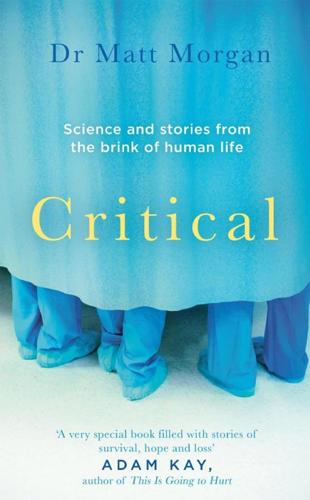
Critical: Science and Stories From the Brink of Human Life
by
Matt Morgan
Published 29 May 2019
His introduction of the World Health Organization’s ‘Surgical Safety Checklist’ has saved millions of lives by ensuring that simple critical steps, such as checking a patient’s name and allergies, are carried out for each and every operation. We have now adapted his checklists for intensive care procedures such as tracheotomies and daily ward rounds. The second strand has borrowed techniques used in industries such as aviation to allow improved team behaviour during a crisis. Crew resource management (CRM) empowers junior staff to question the decisions made by senior members of the team, flattening hierarchy and thereby improving safety. CRM can help teams come together in the fog of a disaster and work together effectively and safely. During emergencies in critical care, I now take a step backwards rather than forwards to get an overview of the situation, assign roles and act on good ideas provided by others.
…
They use language such as ‘lean management’ wrenched from the metal fist of Japan’s post-war car industry and try to apply it to a bloodied operating theatre. It can help medicine when we selectively borrow techniques from safety-conscious industries. Every day my ward round benefits from using crew-resource management theory and checklists founded in aviation. Other strategies can be helpful when trying to improve the efficiency of operating lists, allowing more knee replacement surgeries to be carried out for the same amount of effort. What these industrial standards do not tell us, however, is how critical care should be delivered at 2 a.m. during a surprisingly brutal cold snap.
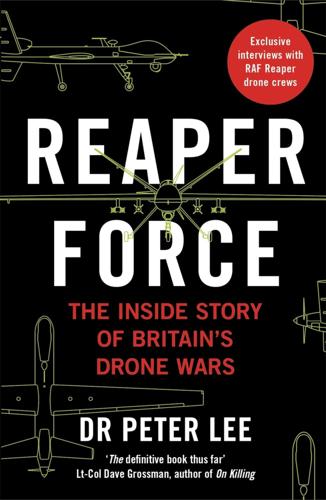
Reaper Force: The Inside Story of Britain’s Drone Wars
by
Dr Peter Lee
Published 14 Jul 2019
Supervises Reaper crews and operations from the Squadron Operations Room BDA Battle damage assessment BUDDY LASE When two aircraft and crews work together to strike a target – one aircraft fires a laser-guided missile or bomb, while a second uses its laser-guidance system to ensure that the weapon hits the target that the laser is ‘lighting up’ CAO Casualty Assistance Officer CAOC Combined Air Operations Centre CASEVAC Casualty evacuation CAT Flying category (e.g. Combat Ready) CDE Collateral damage estimate CIVCAS Civilian casualties CNO Casualty Notification Officer CRM Crew resource management. The sharing out of responsibilities and tasks between the three crew members COMMS Communications. Commonly by radio, electronic signal or secure military internet CPL Corporal DICKING The observation of military personnel and movements by, usually, low-level, unarmed enemy called ‘dickers’ (in Afghanistan they would often be young boys).
…
He was the navigator in the back of an F-4 Phantom fighter jet on an air-to-air gunnery exercise. He and his pilot successfully shot the towed banner that was their target, which then wrapped across the front of their aircraft as they flew into it. On a UK Reaper squadron, additional layers of supervision have been added to prevent such events from happening. Crew resource management (CRM) – sharing out the responsibilities of a particular task between the three crew members – should stop everyone being fixated on just one thing. However, every so often even an experienced, intelligent, committed crew can get overly focused on a particular goal. Perhaps it is adrenaline and the fight-or-flight impulse that causes their focus to zoom in too far and prevents them from seeing the wider picture that is unfolding before them.
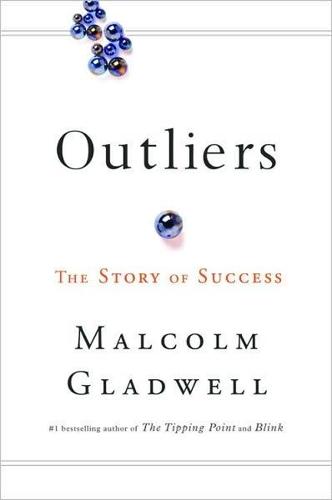
Outliers
by
Malcolm Gladwell
Published 29 May 2017
If the first officer had been the captain, would he have hinted three timesNo, he would have commandedand the plane wouldn't have crashed. Planes are safer when the least experienced pilot is flying, because it means the second pilot isn't going to be afraid to speak up. Combating mitigation has become one of the great crusades in commercial aviation in the past fifteen years. Every major airline now has what is called “Crew Resource Management” training, which is designed to teach junior crew members how to communicate clearly and assertively. For example, many airlines teach a standardized procedure for copilots to challenge the pilot if he or she thinks something has gone terribly awry. (“Captain, I'm concerned about...” Then, “Captain, I'm uncomfortable with...”
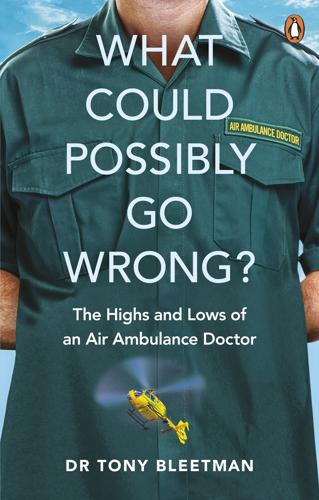
What Could Possibly Go Wrong?: The Highs and Lows of an Air Ambulance Doctor
by
Tony Bleetman
Published 2 Oct 2019
They were taught about the aircraft and its systems and sat exams equivalent to those required by private pilots. They also became proficient in air law, navigation, aircraft marshalling, refuelling, emergency drills, meteorology and, after a few flights, creative swearing. In essence, they became non-handling co-pilots. A big part of their training was Crew Resource Management (CRM), which encouraged effective communications and team-working in a busy cockpit. In the blag-of-all-blags, Porky even managed to get a Robinson-22 light helicopter for them to attempt to fly so they could feel the effects of controls and begin to appreciate what a helicopter pilot has to do.
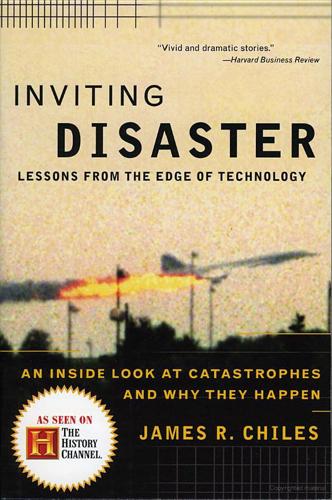
Inviting Disaster
by
James R. Chiles
Published 7 Jul 2008
It had indeed been working, but the response to emergency controls was so slow he hadn’t realized it. And after landing, the copilot had realized before McCormick had that a change in the thrust reverser setting would steer the airplane away from the fire station it had been heading for. A good system, and operators with good “crew resource management” skills, can tolerate mistakes and malfunctions amazingly well. Some call it luck, but it’s really a matter of resilience and redundancy. We know from cockpit records that surprisingly small problems can make for fatal distractions if this resiliency factor is absent. Early proof of its importance came on December 29, 1972, during the flight of Eastern Airlines Flight 401.